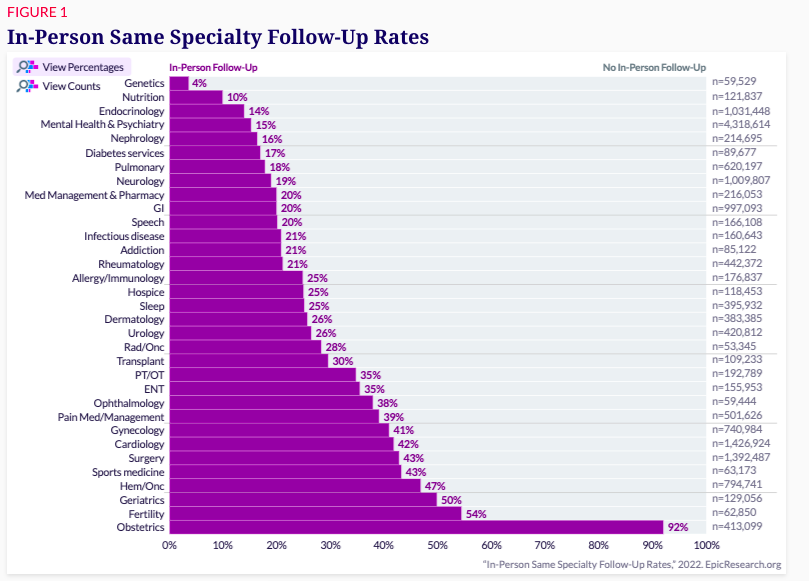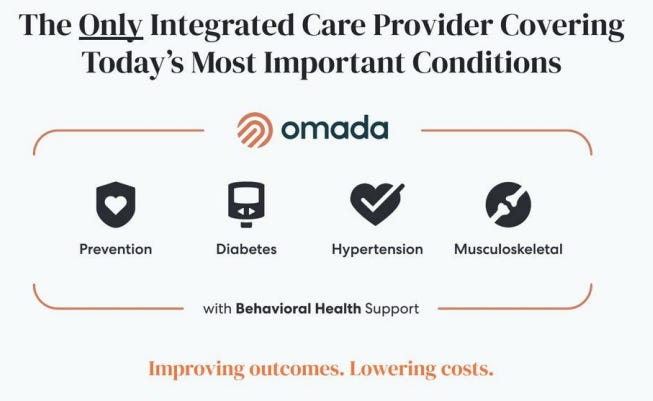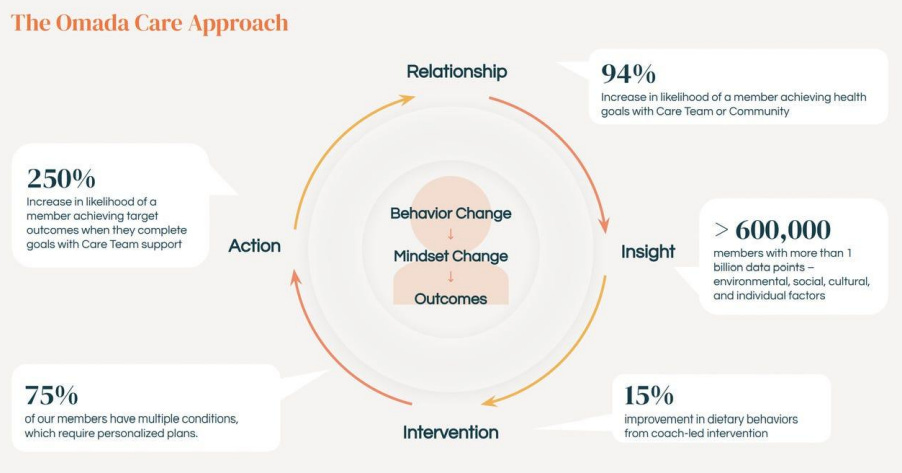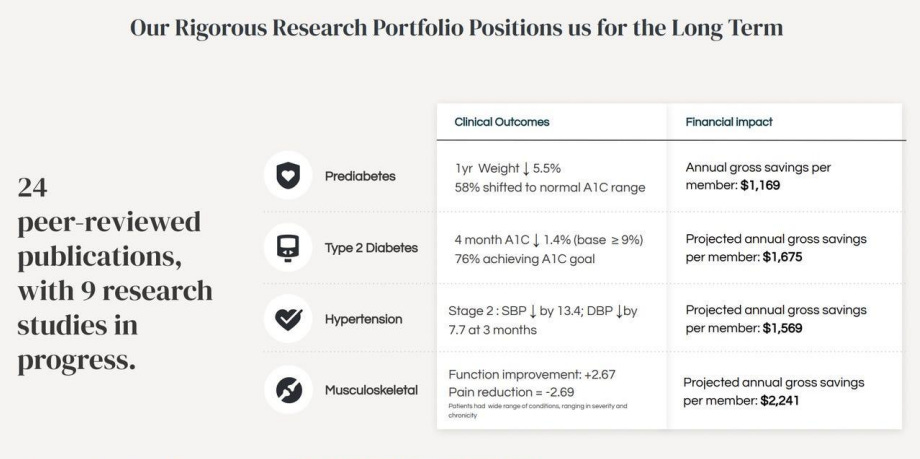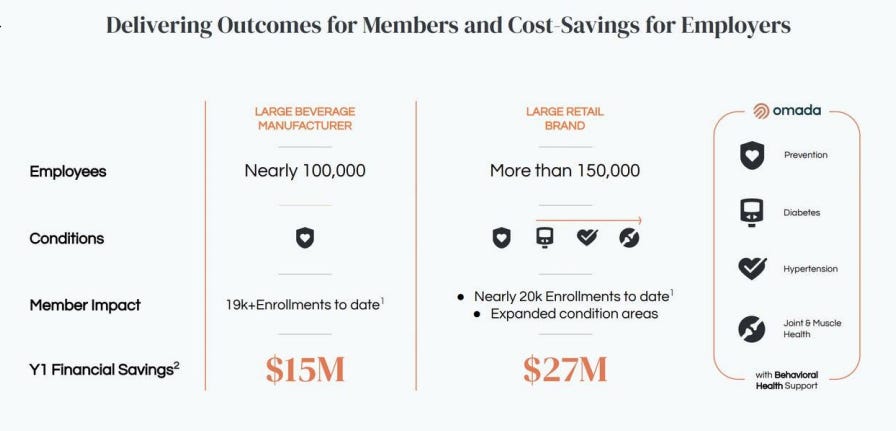In JC’s Newsletter, I share the articles, documentaries, and books I enjoyed the most in the last week, with some comments on how we relate to them at Alan. I do not endorse all the articles I share, they are up for debate.
I’m doing it because a) I love reading, it is the way that I get most of my ideas, b) I’m already sharing those ideas with my team, and c) I would love to get your perspective on those.
If you are not subscribed yet, it's right here!
If you like it, please share it on social networks!
Share 💡JC's Newsletter
🔎 Some topics we will cover this week
The biggest company in the future will be a consumer health tech company that creates a seamless and consumer-centric healthcare experience.
Telehealth may help to reduce the need for in-person visits, which could improve access to care for patients who live far from healthcare facilities or have difficulty traveling.
The U-Scan is an innovative new tool that could be helpful for individuals who want to track their health metrics on a regular basis.
A growing number of healthcare companies are addressing specific areas of healthcare are underserved or have gaps in traditional care models.
Chronic pain can lead to anxiety and frustration
👉 The Biggest Company in the World (Andreessen Horowitz)
❓Why am I sharing this article?
We think the biggest company in the world will be a consumer health tech company
Four of the top five biggest companies in the world are consumer companies, and healthcare is one of the nation’s biggest industries.
a $4 trillion American industry that makes up 20% of US GDP (and growing). This is five times the size of the advertising industry globally
Healthcare is complex and not GAFA’s center of gravity. They may make acquisitions on the margins, but we don’t expect any of them to win the race to own healthcare.
Our bet is the future’s biggest company, the consumer health giant, won’t be one of today’s big tech or incumbent healthcare companies. It will be a consumer-obsessed, healthcare-native tech company that reimagines what care can look like.
Building a “payvidor” (a combined payor and provider) that eventually owns most care
Start by imagining that UnitedHealth Group and Apple had a baby, and that baby had the business model of UHG (a vertically integrated insurer and deliverer of healthcare services) but the sleek consumer experience and brand loyalty of Apple.
👉 Meta slashes health and wellness benefit for employees, following other companies like Twitter in pulling back on perks (Business Insider)
❓Why am I sharing this article?
An interesting trend to understand about the big tech co’ cutting a bit their wellness budget (in the case of Meta, they went from below $1000 to $3000 in 2 years, and are now adjusting down)
Alan should prove that we can be the only investment they make per employee instead of having many perks.
Meta is taking a large chunk out of an employee benefit that covers things like mental health costs and work-life balance needs. The Life@ benefit funds things that help employees and their families reach "personal and well-being goals," according to a description on its careers page. The company recently told employees the benefit will be cut next year to $2,000, versus $3,000 this year, two employees told Insider.
Musk last month rolled out a number of changes to benefits that Twitter employees had received for years, citing a "challenging economic climate" and the need for "cost management." Any benefit or perk associated with "wellness" and "productivity" was taken away, as Insider reported, along with benefits related to group or team activities and continued learning.
👉 Weekly Health Tech Reads 10/23 (Health Tech Nerds)
❓Why am I sharing this article?
The Gist newsletter this week featured a good, sobering perspective on the industry's slow (non-existent?) transition to value-based care, highlighting how the Medicare Shared Savings Program has only saved $3.6 billion on $5.6 trillion of total spending, a savings rate of only 0.06%. The capitated and risk-based percentages in the top right of the chart below highlight just how far away we are - health systems have barely moved toward risk since 2013. Link
👉 Free Rent: OpenAI Deal Shows One Way Microsoft Seeds Its Cloud (The Information)
❓Why am I sharing this article?
Microsoft says it exclusively sells the automatic code generator to tens of thousands of individual developers who pay $10 per month or $100 per year. The company plans to launch corporate subscriptions over the next year
Before its exclusive partnership with Microsoft began, OpenAI paid Google more than $120 million for cloud computing in 2019 and 2020 combined
👉 YouTuber MrBeast pays for cataract surgery for 1,000 people (Link)
❓Why am I sharing this article?
The YouTube video he posted has gained 79 million views since it was posted 5 days ago.
While this may seem a bit silly, when you think about the impact MrBeast has had both on the 1,000 people who can now see and also the millions of people who are now a bit better educated on cataract surgery, its a pretty cool thing.
👉 👉 Telehealth Visits Unlikely to Require In-Person Follow-Up Within 90 Days (Epic Research)
❓Why am I sharing this article?
In nearly every specialty studied, most patients who had a telehealth visit did not require an in-person follow-up appointment in that specialty in the next three months.
For specialties that required follow-up, the additional visits were likely related to needing additional care, not duplicative care (for example, obstetrics, geriatrics).
Mental health and psychiatry had the largest volumes of telehealth utilization and some of the lowest rates of needing in-person follow-up. Only 15% of the time did a patient who had a psychiatry or mental health telehealth visit need an in-person follow-up visit in the next three months.
Nutrition telehealth visits required in-person follow-up only 10% of the time.
Examined more than 35 million telehealth visits.
👉 Complémentaires santé : forte hausse des prestations versées (rapport Drees) (Argus de l’assurance)
❓Why am I sharing this article?
For the first time, collective contracts are as big as individuals
The number of “mutuelles” is a good sign for us
19% average “gross margin” for mutuelles
Les contrats collectifs ont représenté 50% des cotisations collectées en santé.
Le nombre de mutuelles divisé par cinq en 20 ans
Les mutuelles reversent 81% des cotisations aux adhérents
👉 How we fell for the Fitbit (Vox)
❓Why am I sharing this article?
1 in 5 Americans wear fitness trackers.
a recent Gallup survey found that 19 percent of Americans monitor their health stats through fitness trackers and mobile apps.
Pew and other observers have noted a broad adoption across a slew of demographic categories, from age to ethnicity to geography.
👉 This $500 at-home urine lab sits in your toilet and tests your pee - then sends results to your smartphone (Business Insider)
❓Why am I sharing this article?
Withings' U-Scan is a new at-home urine-testing device.
It will be available in Europe in Q2
an at-home urine lab that is placed in your toilet and sends results to an app on your smartphone.
The starter kit, including a U-scan reader and one cartridge worth three months of testing, will cost €499.95
Two kinds of cartridges will be available in Europe: U-Scan Cycle Sync, focused on women's cycle tracking, and U-Scan Nutri Balance, focused on hydration and nutrition.
The cartridge goes inside the pebble-shaped reader, which is placed on the side of the toilet bowl. Pee on that, and the results are synced with the Withings Health Mate app.
The device's thermal sensor detects urine, which is "injected into a test pod where the chemical reaction is read by an optical module," according to Withings.
👉 Consumer Health: Areas of Opportunity (a16z)
❓Why am I sharing this article?
Cardiometabolic/diabetes (e.g. Omada, Livongo, Marley Medical), musculoskeletal (e.g. Sword, Vori), oncology (e.g Thyme, Jasper), and pregnancy and childbirth (e.g. Pomelo Care).
Equip, which offers entirely digital family-based therapy to eating disorder patients and has garnered impressive contracts with national payors.
We’d also include food-as-medicine companies like Season Health which allows providers to “prescribe” healthy food in this domain.
Companies like Calibrate, Found, and Weekend Health have started to fill this void by offering comprehensive medication, education, and support for weight loss. Other examples in this underserved category include companies like Hey Jane, which makes accessing abortion pills easier in an increasingly regulated world, Zaya Care, which is helps people access insurance-covered lactation consulting and pelvic floor therapy.
Bold, which offers insurance-covered fitness classes.o clinician-generated answers (6.5%), while 29.7% of Flan-PaLM answers were
👉 Weekly Health Tech Reads | 1/29 (Health Tech Nerds)
❓Why am I sharing this article?
AAmazon launches RxPass, a $5/mo generic drug offering for Prime members
For an extra $5/mo, Prime members can get as many generic medications they need for eighty common conditions.
👉 Back pain!
❓Why am I sharing this article?
From one members:
Back pain: Dr David Hanscom, and his method of expressive writing cured me.
However, if it’s chronic pain, even if there is a reason for it, there is no need to suffer, it is a malfunction not of the body but of the mind.
So the answer is to write down all of your thoughts- 2 minutes, 5 minutes, 10 minutes, then take the paper, rip it up and throw it away. Do it every day. You are telling your unconscious mind, which runs 99% of the body’s functions, that the conscious mind is taking back control and refusing to accept the pain.
Dr. David Hanscom https://backincontrol.com/the-4-stages/stage-1-laying-the-foundation/begin-expressive-writing/
👉 Expressive Writing (Back in Control)
❓Why am I sharing this article?
Chronic pain is linked with anxiety and frustration (The Terrifying Triad) and your thoughts and life can become progressively dark. My term for the situation is living in “The Abyss.”
In the era of advanced neuroscience research, pain, anxiety, and anger are all viewed as neurological circuits. You cannot control, change, or remove any of these imbedded pathways. You can only detach or separate from them. You then have the capacity to form “detours” or new more functional circuits.
Expressive writing is an exercise that creates this needed space. It creates an awareness of your thoughts, positive or negative, and separates you from them. Its effectiveness has been demonstrated in many research studies.
Associating thoughts with physical sensations forms new neurological connections.
Writing down thoughts creates a space between you and your thoughts on the paper
Your brain associates that space with vision and feel.
You have physically separated from your thoughts.
Your journey to healing will begin only when you engage in a regular writing routine. Write and don’t stop
Write your thoughts and instantly destroy them.
Write down specific thoughts. They do not have to make any sense or be legible.
Destroy them.
Do this once or twice a day for 15-30 minutes per session.
It is counter-productive to “journal” or keep these writings.
Write in this free-flow format for a couple of weeks.
There is usually a shift in anxiety and frustration within a short time. Writing in the format described in Feeling Good provides more focus and structure in addition to the free expressive writing. For some people, the anxiety may significantly worsen and you should limit or stop the writing until you feel you can handle.
Feeling Good
Read the first third of David Burn’s book, Feeling Good.
Write in his “three-column” format.
This format stimulates reprogramming of your nervous system: 1) awareness 2) separation 3) establishing new circuits.
This book is most effective with engaging in the suggested writing. Letter from David Burns
Continue to IMMEDIATELY destroy your writing.
👉 Omada Health; See the presentation Omada Health used to raise $192 million to gear up for an IPO (Business Insider)
❓Why am I sharing this article?
We could check their goal setting tools and see if it is worth being inspired by it
They spent a lot of time being peer reviewed and I think it is a muscle we should build
As a result they present their savings well.
The slide on how they present to employers is interesting for us.
Their penetration rate is a good benchmark.
The app includes goal-setting tools and content personalized to people's conditions. Those with hypertension see charts tracking their blood pressure from cuffs that Omada sends in the mail, for example.
Omada has a separate app for musculoskeletal conditions. Duffy said the company planned to keep that experience separate, since MSK care focuses on exercise and physical therapy and requires different specialists on the patient's care team.
Should we do more research?
It’s already over! Please share JC’s Newsletter with your friends, and subscribe 👇
Let’s talk about this together on LinkedIn or on Twitter. Have a good week!

